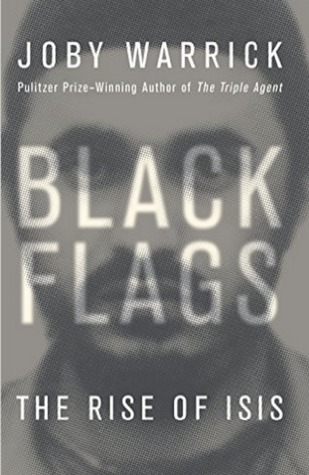More on this book
Community
Kindle Notes & Highlights
The other groups’ targets had consisted of small-time symbols of Western corruption, from liquor stores to video shops and pornographic movie houses. One of the early attempts at a bombing had been a spectacular failure: A member of the group had volunteered to plant explosives inside a local adult cinema called the Salwa. After a few minutes in the theater, the would-be assailant had become so engrossed in the film that he forgot about his bomb. As he sat, glued to the screen, the device detonated under his feet. No patrons were hurt, but the bomber lost both his legs.
Sharif Hussein bin Ali, the seventy-eighth emir of Mecca and the great-grandfather of Jordan’s King Hussein, came to power as the Ottomans were lurching toward collapse. After the Turks sided with Germany at the outset of World War I, Sharif Hussein began secret negotiations with Britain with the aim of instigating a rebellion seeking Arab independence. In 1916, he agreed to help Britain and the Allied powers drive against the Turks in exchange for a promise of future British recognition of the new Arab-Islamic nation. Four of the sharif’s sons—Ali, Faisal, Abdullah, and Zeid—would lead Arab
...more
The Arabs were victorious, but Britain’s promises to Sharif Hussein expired even before the conflict ended. Britain and France pre-emptively divvied up the captured Ottoman lands into British and French protectorates under the secret Sykes-Picot Agreement of 1916. After the war, the maps were redrawn to create entirely new states, including the kingdoms of Iraq and Syria and, on the narrow strip of land between the Jordan River and the Mediterranean Sea, a Jewish homeland that would later become Israel.
One of the Kurdish groups was a Taliban-like movement that included scores of Afghan war veterans and called itself Ansar al-Islam, or “Helpers of Islam.” Its leaders were Sunni Muslim extremists who quickly imposed harsh Sharia law in the villages they controlled. They banned music in all forms, forced women to cover their faces in public, and outlawed schools for girls. They also developed a fondness for experimenting with poisons, building a crude lab in which they exposed stray dogs to cyanide and homemade ricin.
In town, the hallmarks of modern civilized life slipped away, one by one: garbage collection, phone service, electricity. Shopkeepers who tried to stay open found themselves subjected to arbitrary and occasionally bizarre regulations. In some neighborhoods, grocers were threatened with punishment if they displayed cucumbers and tomatoes in the same stall. The jihadists maintained that the vegetables resembled male and female body parts and should not be permitted to mingle.
It was no easy assignment. Unlike Shiites or Roman Catholics, Sunni Muslims lack a centralized religious hierarchy that settles theological debates. Muftis, Sunni clerics of a certain rank, can issue religious edicts called fatwas, but any two can disagree wildly on the same topic: what is a damnable sin to one scholar may be regarded as permissible or even obligatory behavior to another.
He dressed fully in black, from his beard and gangsterlike skullcap to his ninja’s black pants and tunic. The only color contrast came from the green ammo pouch strapped to his chest and his jarringly white Made in the USA New Balance sneakers.
The night before, Syrian television had broadcast a less-than-flattering report about an American delegation arriving in the country’s fourth-largest city. “The ambassador of America, in Hama!” one of the protesters shouted. Within seconds, the car was mobbed by cheering Syrians who pressed against the car until it could barely move. Onlookers threw rose petals and garlands until the driver had to stop and clear the windshield in order to proceed. A chant began from somewhere in the throng and quickly grew into a roar.
CIA-backed fighters were paid $100 to $150 a month, less than half the salary offered by the Islamists. Ammunition rations were so meager that one commander complained that his soldiers were receiving on average about sixteen bullets per month. Many of the new soldiers wandered off to join other units, taking their weapons with them. “We thought going with the Americans was going with the big guns,” one of the CIA-supplied commanders said.7 “It was a losing bet.”
He first commenced an organizational overhaul, appointing regional governors, Sharia advisers, and military commanders to oversee operations locally throughout Iraq and Syria. The Islamic State would function like a real government, with flow charts for acquiring approvals and special departments in charge of social media, logistics, finances, training, recruitment, and even the management of candidates for suicide missions, who were kept apart from the regular fighters to ensure proper indoctrination.
The former Zarqawi disciple had clearly given much thought to his first public appearance, for he infused each moment with symbolic gestures sure to be recognized by the devout. Baghdadi wore a black robe and turban, evoking the dress of Allah’s last prophet on the day of his final sermon. He climbed the steps of the minbar slowly, pausing at each one to emulate another of Muhammad’s habits. At the top, as he waited to begin his sermon, he pulled from his pocket a miswak, a carved wooden stick used for oral hygiene, and began cleaning his teeth. Again the act deliberately invited comparison to
...more


